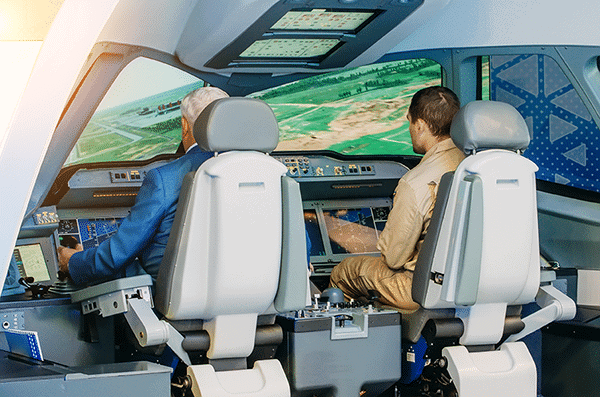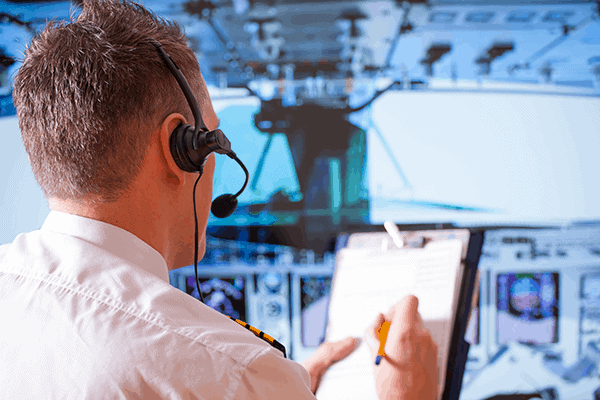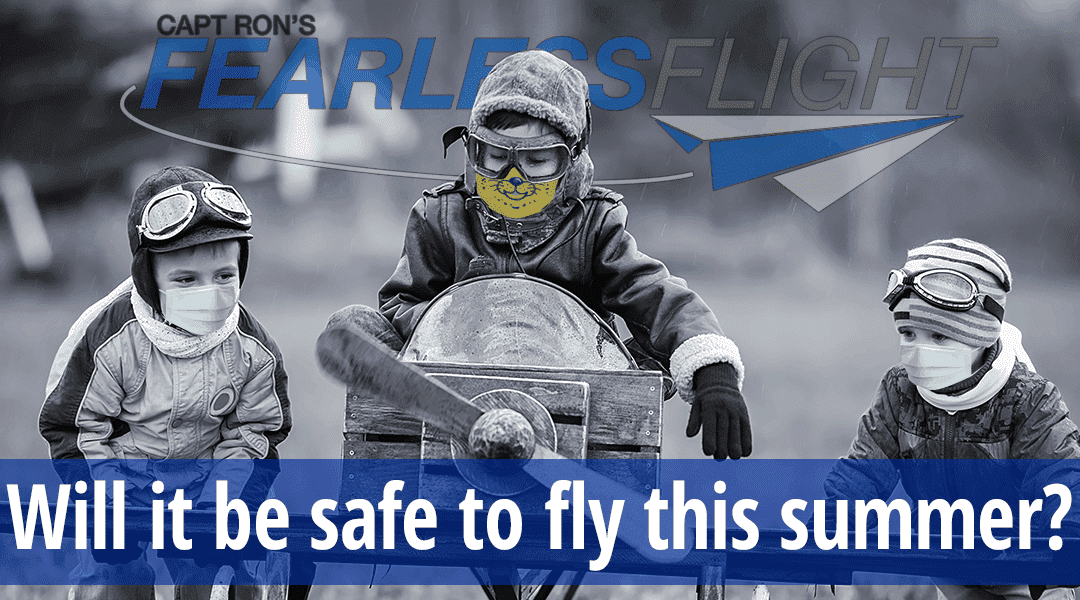Capt Eric here again to talk about some more flying stuff. If you enjoy this blog column of mine and would like me to cover specific topics or questions, you can submit them right here.
If you are new to my blog column, you may not know that every Tuesday at 6:30pm Pacific, on our weekly FearlessFlight® LIVE Show, the crew and I have been talking about the airline news and changes in commercial aviation due to this pandemic.

In my last blog post (which can be found here) we were talking about some of the basics of medium and long-term aircraft storage.
Today we are going to talk about what the thousands of pilots are doing that are still connected to their respective airlines but have been flying very little or not at all. But even more important to you of course is learning about exactly how pilots everywhere must prepare so that they are both legally and mentally ready to fly, as more and more flights get added to our domestic as well as international flight schedules.
I also talked about this topic on Episode 26 of our Weekly FearlessFlight® LIVE Show. In this episode we also speak to our Flight Attendant Diane and formerly fearful flyer and airline employee, Paul Santa Cruz. Both were working and gave us an insider’s report for what it is like when you are getting to an airport and flying during this Coronavirus Pandemic.

So, what are these pilots doing during their unplanned long leaves of absences?
It certainly is an understatement to say that the swift and deep schedule cutbacks caught everyone by surprise. Suddenly thousands of pilots were home with their significant others, kids, pets, etc.
Home every day. All week. All month. Nowhere to go. Nothing to do (except to point out how everyone else under the same roof could embark on a course of self improvement). All these days off (in a row) which at one point had no end in sight.
Obviously, this can’t have ended well for some number of them. If they ‘disappeared’ it is unlikely that anyone who knows will say where they are.
My company and several others have offered programs of leaves of absences of varying lengths to their respective flight crews due to the massive travel demand reduction and parking of thousands of airliners.
CAUTION! Pilot Humor ahead!

For the survivors though the airlines needed to keep the crews fully qualified to fly.
The reason for this is at some point the Coronavirus will be diminished, wrestled to the ground and controlled, or if we get really lucky, eliminated for all practical purposes by an effective vaccine. As we progress along this path people will want to fly again for business or pleasure.
The airlines knew that they could not just let all their pilots’ currency lapse and then try to funnel all of them through training in a fairly tight time envelope. No company has the capacity for that. So in general the deals they struck with the pilot groups consisted in general of paying them some percentage of their normal salary and in turn they would jump through a few hoops so that they remained legal to operate their respective airplanes when the situation reversed course and flying schedules once again began to expand.
The first condition is/was that the pilots keep their medical certificates in force by complying with the required exam schedules. With few exceptions this means that all pilots must get an exam and obtain a new certificate every six months or twelve months depending on fleet type and qualifications.
The flying part is a little more complicated. Federal aviation regulations state that among many other requirements a pilot must have performed 3 take offs and landings in the same category and class of airplane they wish to operate in the preceding 90 days.
Examples of Categories are:
- Airplane, Glide, Helicopter
Examples of Class are:
- Single-engine Land or Sea Plane
- Multi-engine Land or See Plane
So, if the pilot lives next door to a well heeled fellow who happens to have a multiengine airplane sitting in a local hangar and the pilot flies around in that enough to maintain landing currency will that be good enough?
The short answer is ‘no.’
That technically complies with the federal aviation regulations, but the airlines have a more restrictive and binding set of rules called operations specifications that detail all aspects of aircraft operation.
Airlines require that the pilot, if out of landing currency, return to one of the company’s training centers and fly a specific landing currency profile that will consist of several types of maneuvers. These will include takeoffs with and without engine failures, rejected takeoffs, different types of instrument approaches with both engines operating or single engine as well as one and two engine landings and missed approaches.
All of this will be done in simulated lousy weather. When the pilot leaves the training center, he will be fully ready to fly as well as legal per the recency of experience requirements.
In addition to the above-mentioned recency of experience (landings) requirements pilots are still required to complete ‘normal’ recurrent training programs.

I have to mention here that one of my BFFs mom used to call it “reoccurrence training”, as in ‘it occurred before and it will occur again,’ which is factually correct.
At any rate, as well as remaining current for landings, each pilot will typically complete a course of one day of ground school followed by two days in the flight simulator normally every nine months depending on the company training program that has been approved by the FAA specifically for that airline company.
The day of ground school will generally consist of a detailed review of aircraft systems, handling emergency equipment in the cabin of the aircraft, and a discussion of maneuvers that will be practiced in the simulator sessions.
Besides practicing ‘normal’ emergency situations the company will tailor each new nine month program to specific new flying challenges that have arisen in normal operations over the last few months.

A great example of this might be to incorporate flying the airplane at unusually light weights (as would be a new normal condition encountered with very few passengers onboard). Takeoffs and landings could be practiced at those weights in varying wind conditions so the pilot would become familiar to the lightly loaded aircraft ‘feel.’
So, as I touched on above, pilot storage is just as complicated as airplane storage. However, you can rest assured that all pilots on commercial airliners will be current and perfectly ready to fly you where you need or want to go!
Uncertainty about travel demand will influence whether airlines will park or return to service airplanes as needed.
I was greatly encouraged to see my airline had pulled 140+ narrow-body aircraft (737s and A-320s) out of storage recently based on future ticket purchases. In the same vein pilots must be prepared to qualify in a different seat or fleet with a few weeks notice based on demand.
If you are not a fan of uncertainty and surprises, being a flight crew member during the Covid-19 global pandemic, any job in commercial aviation is not the right career path for you.




